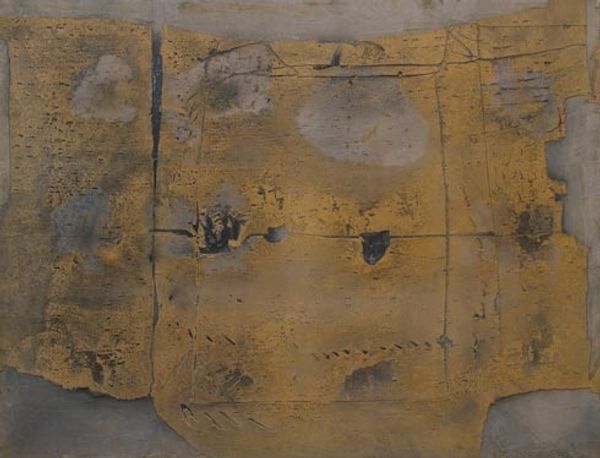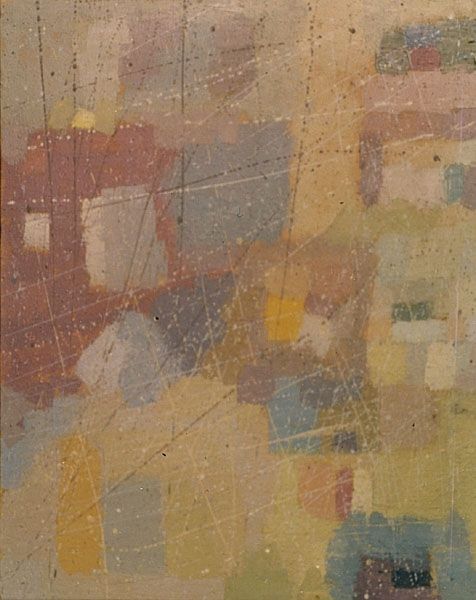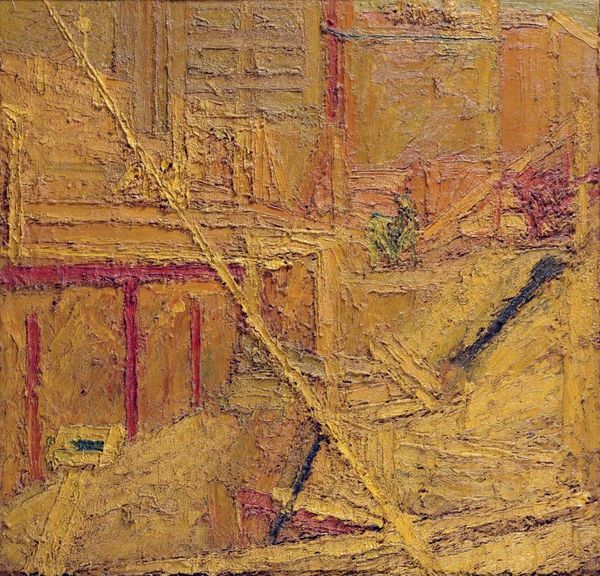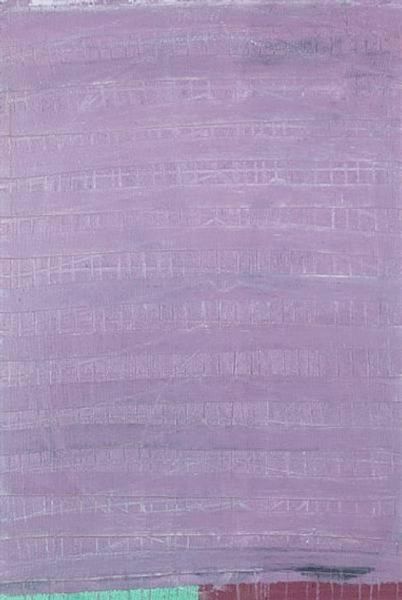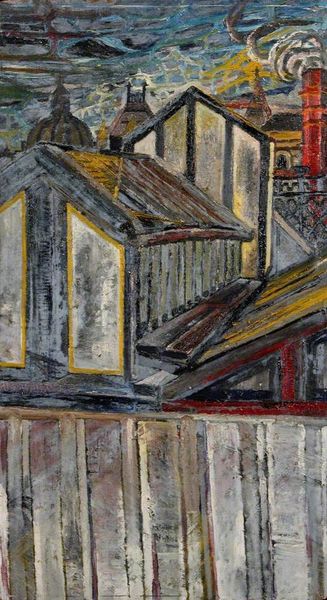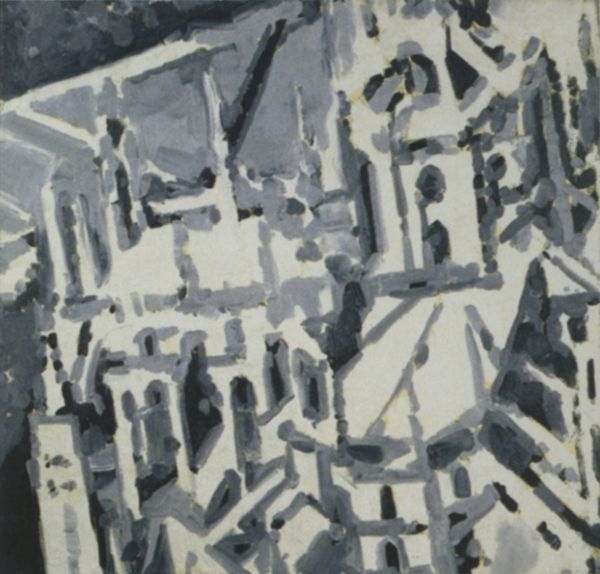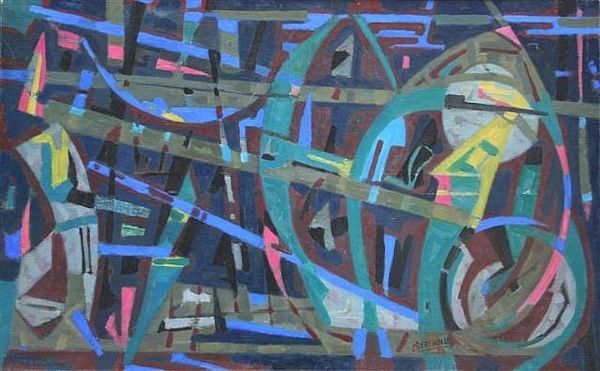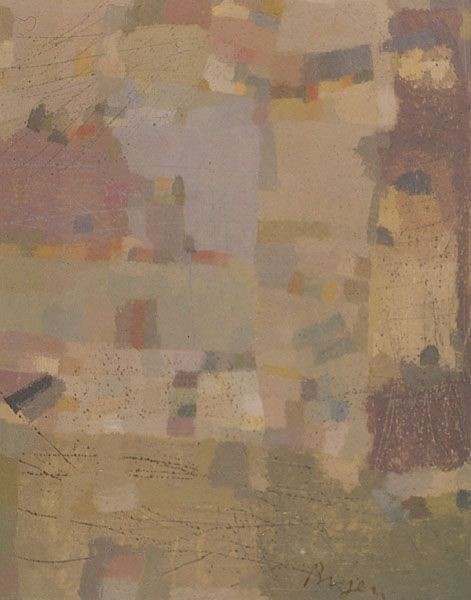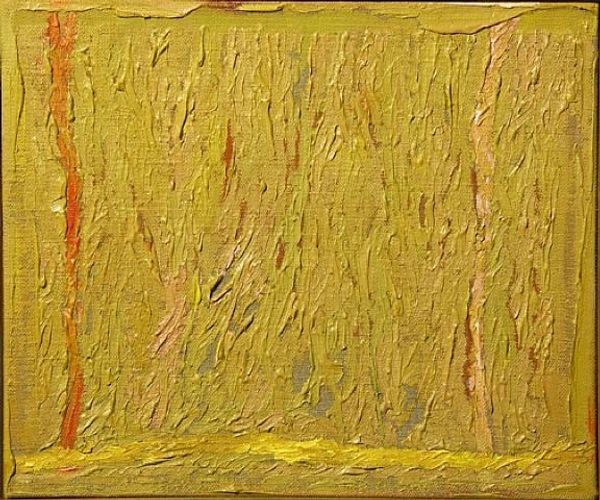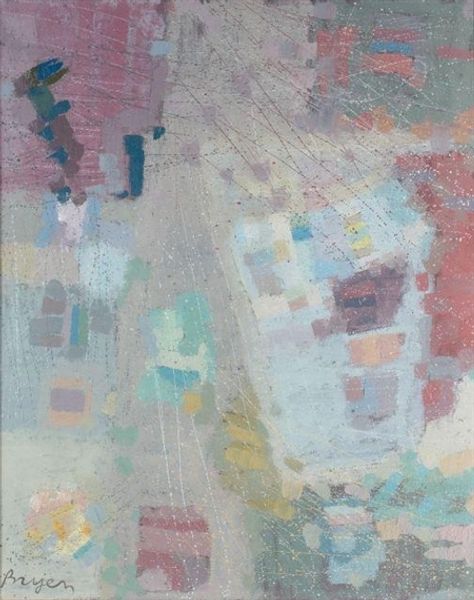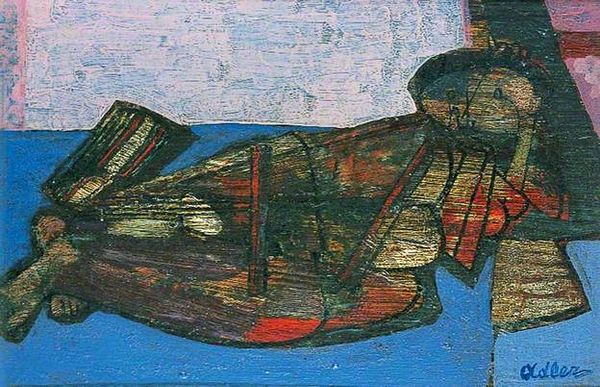
painting, oil-paint
#
abstract-expressionism
#
painting
#
pattern
#
oil-paint
#
geometric pattern
#
abstract pattern
#
organic pattern
#
geometric
#
vertical pattern
#
abstraction
#
line
Copyright: Serge Charchoune,Fair Use
Curator: Here we have Serge Charchoune's 1959 oil on canvas, "Marche funèbre de Beethoven, 3ème étape." It’s a fascinating example of abstract expressionism, and what immediately strikes you about it? Editor: A muted palette. Shades of gray layered densely, with barely perceptible tonal shifts that hint at underlying forms. There's a sense of somber restraint. It feels…institutional, almost bureaucratic, like the architecture of a mid-century civic building. Curator: Interesting. Charchoune, although associated with the Parisian avant-garde, had a complex relationship with institutional power, oscillating between embracing and critiquing established artistic norms. His movement between styles like Cubism, Expressionism, and eventually abstraction, reflects his search for an artistic language adequate to address social concerns during a period marked by profound political and cultural shifts. Editor: So, beyond the aesthetics, what statement might this seemingly unemotional rendering of such an emotionally charged musical piece be making about loss and memory in a postwar context? What does it mean to depict mourning abstractly? Curator: In that respect, you might read it as a reaction against traditional war monuments or figurative depictions of grief. The abstraction, instead of sentimentalizing death, presents a more universal experience of loss—stripped bare. Furthermore, the geometric pattern could allude to the systematic destruction experienced during the war, almost dehumanizing it. Editor: Yes, dehumanizing, but also perhaps speaking to collective trauma. This piece may resonate more as a communal reckoning rather than a focus on individual pain. If you accept art has a socio-political role to help with collective emotions, Charchoune here challenges how exactly to go about representing those. Curator: It’s also important to remember that the very act of abstracting a well-known musical piece opens up the question of accessibility within the art world. Is this abstraction a move towards elitism, further removing art from broader audiences, or an attempt to make it open to other types of experience? Editor: It’s probably both. Charchoune simultaneously engages and excludes through his art. This, ultimately, makes us contemplate art as more than just a passive reflection; it’s also a challenge to perception. Curator: Absolutely. I leave feeling there is so much more to discuss and debate around a piece like this. Editor: Definitely a somber yet intriguing work.
Comments
No comments
Be the first to comment and join the conversation on the ultimate creative platform.
